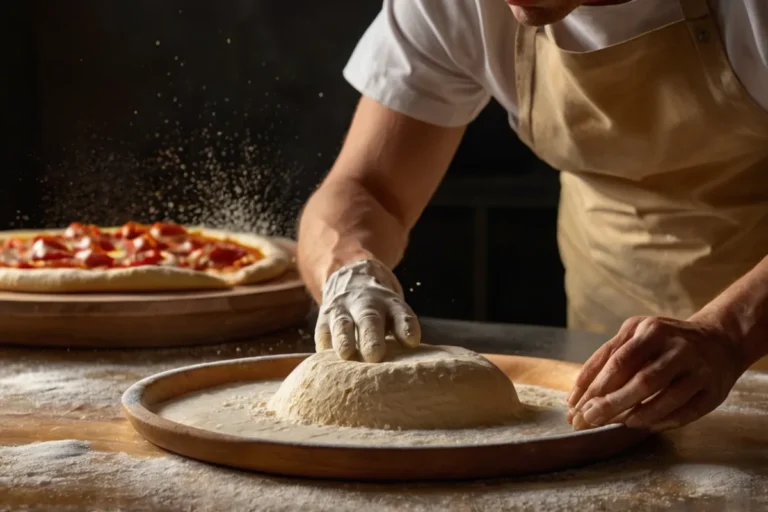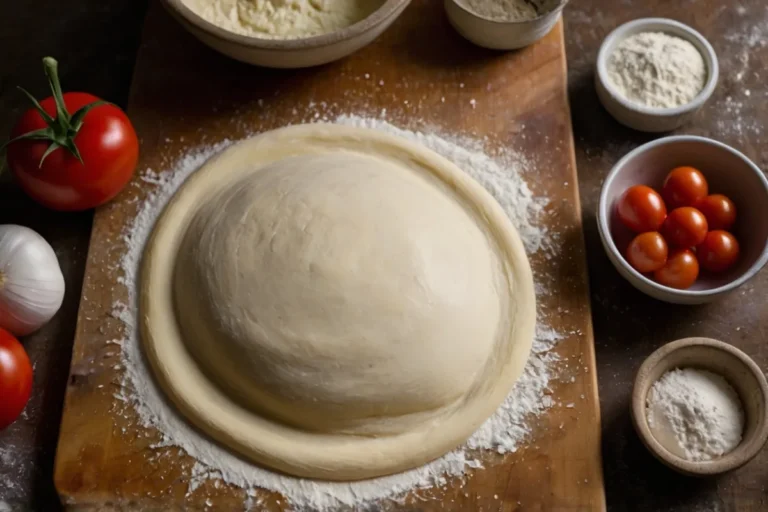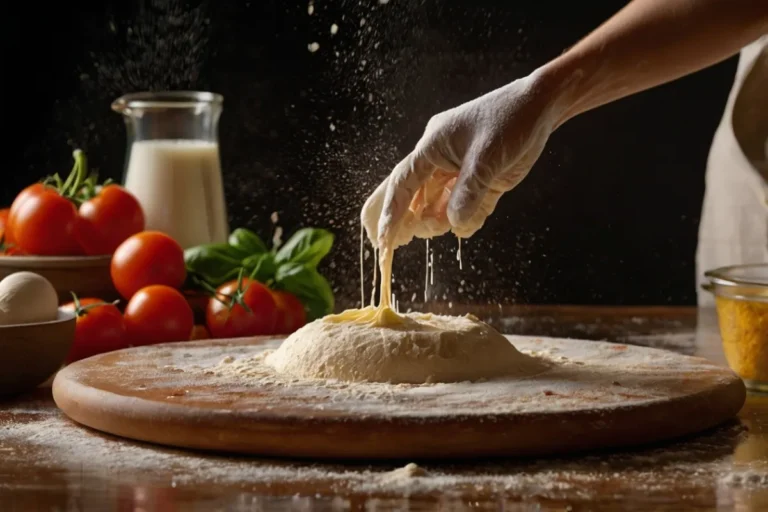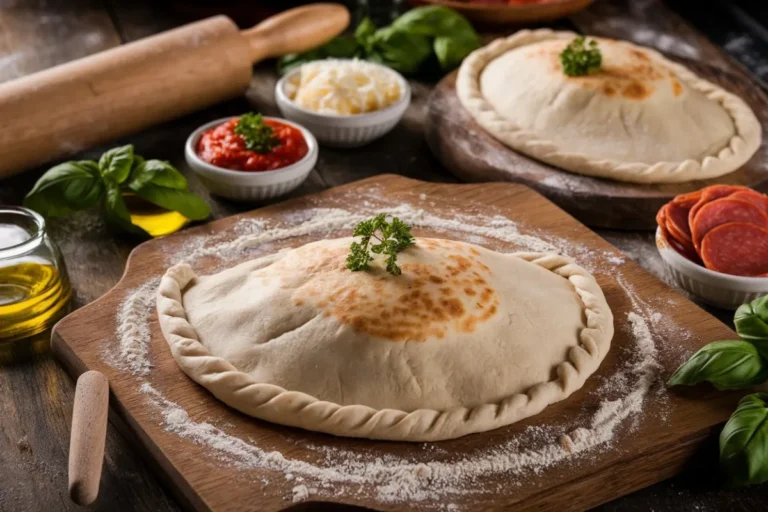Exploring Different Types of Pizza Flour: What Every Home Chef Should Know
Introduction to Pizza Flour Varieties
Creating the perfect pizza at home starts with understanding pizza flour varieties, as each type plays a unique role in texture and flavor. Just as cottage cheese recipes benefit from the right ingredients, your choice of flour can elevate homemade pizza from good to unforgettable. By exploring different flour types, you can find the perfect match for your desired pizza style, whether it’s Neapolitan, New York, or a thick, deep-dish slice.
One popular option among home chefs is all-purpose flour, known for its versatility and availability. Although all-purpose flour works well for a range of recipes, its moderate protein content may not always deliver the ideal pizza crust. For a more chewy and stretchy dough, other flour options like bread or 00 flour might be more suitable. This is because each pizza style calls for a specific texture, which the right flour can help achieve.
For authentic Neapolitan pizza, many pizza makers turn to 00 flour, a finely milled flour with a high protein level. The fine texture allows for a soft, airy crust with a slight chew, while the high gluten content makes the dough easy to stretch. This unique combination is key to creating the signature Neapolitan texture that’s crispy on the outside and tender on the inside.
Meanwhile, bread flour is ideal for New York-style pizzas due to its higher protein content. This type of flour creates a crust that’s crisp yet chewy, perfect for foldable slices. Knowing which flour suits each pizza style helps you master homemade pizza, whether you’re after a light and airy crust or a classic New York slice. Understanding these flour varieties can transform your pizza-making experience, letting you create restaurant-quality pizzas right from your kitchen.
Understanding Gluten Content and Its Impact
The gluten content in pizza flour plays a significant role in determining the texture and quality of your pizza dough. Just as cottage cheese recipes rely on texture and consistency, pizza dough depends on gluten to achieve the perfect balance of chewiness and stretch. Understanding gluten’s impact on pizza allows home chefs to create crusts that meet their specific tastes, from airy Neapolitan to chewy New York-style.
Gluten forms when water is mixed with flour, creating a network of proteins that gives dough elasticity and structure. Flour with a high gluten content, such as bread flour, results in a chewier, more resilient dough ideal for pizzas that need to hold up under toppings. For pizza styles that require a softer crust, such as Roman or Neapolitan, flour with moderate to lower gluten content, like 00 flour, provides a tender bite without compromising stability.
When choosing a flour based on gluten content, it’s essential to match it with the desired pizza style. Higher gluten flours, which have 12–14% protein, are best for thicker crusts and styles that benefit from a chewy texture. On the other hand, lower gluten flours, typically around 8–10% protein, create a more delicate crust that’s easier to stretch thin. This balance is what gives each pizza style its unique bite and texture, making gluten content a key factor in achieving authentic results.
Experimenting with different gluten levels can also help home chefs refine their dough for specific results. For instance, mixing a small amount of bread flour with 00 flour can add structure to Neapolitan-style dough, while keeping the lightness intact. Understanding the role of gluten gives home chefs the flexibility to tailor their pizza dough, making it easy to create restaurant-quality pizzas that meet personal texture preferences every time.
Comparing All-Purpose, Bread, and Specialty Flours
When making pizza at home, choosing the right flour can make all the difference, just as selecting quality ingredients elevates cottage cheese recipes. In this section, we’ll compare all-purpose, bread, and specialty flours to help you understand how each flour type impacts your pizza dough. By knowing the characteristics of each, you can create a crust that’s perfect for your preferred pizza style.
All-purpose flour is a go-to option for many home chefs because of its versatility and accessibility. With a moderate protein content of around 10-12%, it produces a balanced dough that’s easy to work with. This flour can create a pizza crust that’s light yet slightly chewy, making it a solid choice for those who want a quick, adaptable base. However, if you’re aiming for a specific pizza style, all-purpose flour might lack the exact texture needed for authentic results.
Bread flour is ideal for those who prefer a chewier, more substantial crust, as its protein content ranges between 12-14%. The higher gluten development provides the dough with more elasticity, making it perfect for New York-style pizzas that need a foldable, sturdy crust. Bread flour’s ability to create a firm yet airy texture can handle heavier toppings, allowing for a well-balanced slice. If you’re looking for a pizza crust that’s crispy on the outside and chewy on the inside, bread flour is an excellent choice.
Specialty flours, such as 00 flour, offer unique textures tailored to specific pizza styles. 00 flour, finely milled with a high protein content, is essential for Neapolitan pizza, providing a light, tender crust with just the right amount of chew. Other specialty flours, like whole wheat or gluten-free blends, can offer alternative flavors and textures, catering to various dietary needs. By comparing these flours, you can better understand how each type brings out the best in different pizza styles, allowing you to create pizzas that taste and feel authentic.
How to Choose the Right Flour for Different Pizza Styles
Selecting the right flour for your pizza style is as essential as using high-quality ingredients in cottage cheese recipes. Each type of pizza has unique texture requirements that the right flour can help you achieve. From a thin and airy Neapolitan crust to a thick and chewy Sicilian base, here’s a step-by-step guide to matching flour types with specific pizza styles to get the best results every time.

- Neapolitan Pizza (00 Flour):
Start with 00 flour, which is finely milled and high in protein. To make Neapolitan pizza, combine 2 cups of 00 flour with ¾ cup of water, ½ teaspoon of yeast, and 1 teaspoon of salt. Knead the dough until it’s smooth and stretchy, then let it rise for 8–12 hours. When ready to bake, roll the dough thin and bake in a hot oven (500°F) for 8–10 minutes. This process ensures a light, airy crust that’s crisp on the outside and tender on the inside. - New York-Style Pizza (Bread Flour):
Use bread flour for New York-style pizza, as its higher gluten content creates a chewy, foldable crust. Mix 2 cups of bread flour with 1 cup of water, ½ teaspoon of yeast, and 1 teaspoon of salt. Knead until elastic and let the dough rise for at least 24 hours in the refrigerator. After rising, shape the dough into a thin round and bake at 475°F for 12–15 minutes. The bread flour adds strength and texture, creating the classic New York slice. - Sicilian Pizza (All-Purpose Flour):
For a thick, airy Sicilian crust, all-purpose flour works well due to its moderate gluten level. To make Sicilian pizza, combine 2½ cups of all-purpose flour with 1 cup of water, ½ teaspoon of yeast, and 1 teaspoon of salt. Knead the dough, let it rise for about 24 hours, then press it into a rectangular baking sheet. Allow the dough to rise once more for an hour, then bake at 450°F for 15–20 minutes. All-purpose flour’s versatility creates a soft, thick crust that’s ideal for this style. - Gluten-Free Pizza (Gluten-Free Flour Blend):
For gluten-free pizza, use a gluten-free flour blend designed for baking. Combine 2 cups of gluten-free flour with 1 cup of water, 1 tablespoon of oil, ½ teaspoon of yeast, and 1 teaspoon of salt. Mix thoroughly, let rise for 1–2 hours, then press into your pan. Bake at 400°F for 15–20 minutes. This blend provides a light and crispy base, perfect for those avoiding gluten.
By following these steps, you can achieve the right crust for every pizza style, enhancing your home-cooked pizza experience!
Tips for Experimenting with Flour Blends
Experimenting with flour blends for pizza dough can be as rewarding as discovering new flavors in cottage cheese recipes. Blending flours lets you tailor the texture and taste of your pizza crust to create something truly unique. By combining different flour types, you can achieve a perfect balance between chewiness, crispiness, and flavor. Here’s a step-by-step guide to experimenting with flour blends that will elevate your homemade pizza to a new level.
- Start with a Base Blend (50/50):
Begin with a simple 50/50 blend of bread flour and all-purpose flour. For example, mix 1 cup of bread flour with 1 cup of all-purpose flour, adding 1 cup of water, ½ teaspoon of yeast, and 1 teaspoon of salt. Knead until smooth, then let the dough rise for 12–24 hours in the fridge. This combination provides the chewiness of bread flour with the softness of all-purpose, resulting in a well-balanced crust. Bake at 475°F for about 12–15 minutes. - Create a Rustic Blend with Whole Wheat Flour:
If you prefer a rustic flavor, replace 25% of your flour with whole wheat. For instance, mix 1½ cups of bread flour with ½ cup of whole wheat flour, then add water, yeast, and salt as above. Whole wheat flour adds a nutty, rich flavor and extra fiber. Let the dough rise for 24 hours, then bake at 450°F for 15–20 minutes. This blend works well with hearty toppings like mushrooms and spinach, adding complexity to each slice. - Add 00 Flour for a Softer, Stretchy Dough:
For a tender Neapolitan-style crust, blend bread flour with 00 flour in a 1:1 ratio. Combine 1 cup of bread flour and 1 cup of 00 flour, add water, yeast, and salt, and knead until smooth. Allow it to rise for 8–12 hours, then bake in a preheated oven at 500°F for 8–10 minutes. The 00 flour lends softness and elasticity, resulting in a thin, airy crust perfect for high-heat baking. - Experiment with Gluten-Free Options:
For a gluten-free crust, mix a gluten-free all-purpose blend with almond flour in a 2:1 ratio. Use 2 cups of gluten-free flour and 1 cup of almond flour, adding water, salt, and a bit of oil for moisture. Let the dough rest for an hour, then shape and bake at 400°F for 15–20 minutes. This blend creates a light, crispy crust with a subtle nutty flavor.
Experimenting with flour blends not only enhances your pizza-making skills but also lets you enjoy customized textures and flavors in each batch. Adjusting flour types in this way can help you create your signature crust!
Storage Tips for Maintaining Freshness
Keeping pizza flour fresh is essential for achieving the best results in homemade dough, just as freshness enhances the flavors in cottage cheese recipes. Proper storage of your pizza flour can help preserve its natural flavor, texture, and gluten strength, which are vital for great pizza crusts. By following a few simple storage tips, you can ensure that your flour stays in top condition, ready for your next pizza-making session.
Firstly, always store your pizza flour in a cool, dry place. Excess heat or moisture can spoil flour, causing it to clump and even lose some of its gluten strength. Keep the flour in an airtight container to protect it from humidity and prevent contamination. Storing it in a pantry or cabinet away from direct sunlight works well for maintaining flour’s freshness and quality.
For those who buy flour in bulk, refrigeration or freezing can extend its shelf life even further. Place your flour in an airtight freezer-safe bag or container, then store it in the freezer. This method helps prevent oils in the flour from turning rancid and keeps it safe from pests. When you’re ready to use it, allow the flour to come to room temperature before making your dough for the best results.
Finally, consider labeling your containers with the date of purchase or expiration. Flour can stay fresh for 6–12 months in the pantry and up to 2 years in the freezer if stored properly. Regularly checking the date helps you use the oldest flour first, reducing waste and ensuring that you’re working with the freshest ingredients. With these simple storage practices, your pizza flour will stay fresh and ready for whenever pizza cravings strike.
Conclusion: Elevating Your Pizza Game with the Right Flour
Crafting the perfect pizza at home goes beyond just a tasty sauce and fresh toppings; it begins with choosing the right flour, just as selecting quality ingredients enhances cottage cheese recipes. Understanding pizza flour types and their specific uses allows you to elevate your pizza game, creating crusts with the exact texture and flavor you love. By matching flour to pizza styles, you’re well on your way to producing restaurant-quality pies right in your kitchen.
Each type of pizza flour offers unique characteristics. Whether you’re after a soft, chewy crust or a crispy, thin base, selecting the ideal flour is essential. Experimenting with different flours—such as bread flour, all-purpose, and even whole wheat—can unlock new textures and flavors, transforming your homemade pizza experience. This process not only improves your cooking skills but also gives you a better understanding of dough-making techniques.
Additionally, proper storage and handling of your flour ensure each batch maintains optimal freshness. Flour that’s stored well holds its gluten strength and texture, helping you achieve consistent results with each pizza-making session. Following the simple storage tips discussed can prevent waste and make sure your ingredients are always ready to deliver the best flavor.
In conclusion, experimenting with pizza flours and finding the right one for each style can elevate every pie you make. Armed with the knowledge of flour types and storage practices, you’ll be creating pizzas that rival any pizzeria. So, enjoy the journey, and remember that every choice in the kitchen—from flour to toppings—brings you closer to your perfect pizza.
The Ultimate Guide to Choosing the Best Pizza Flour for Perfect Homemade Pizza







